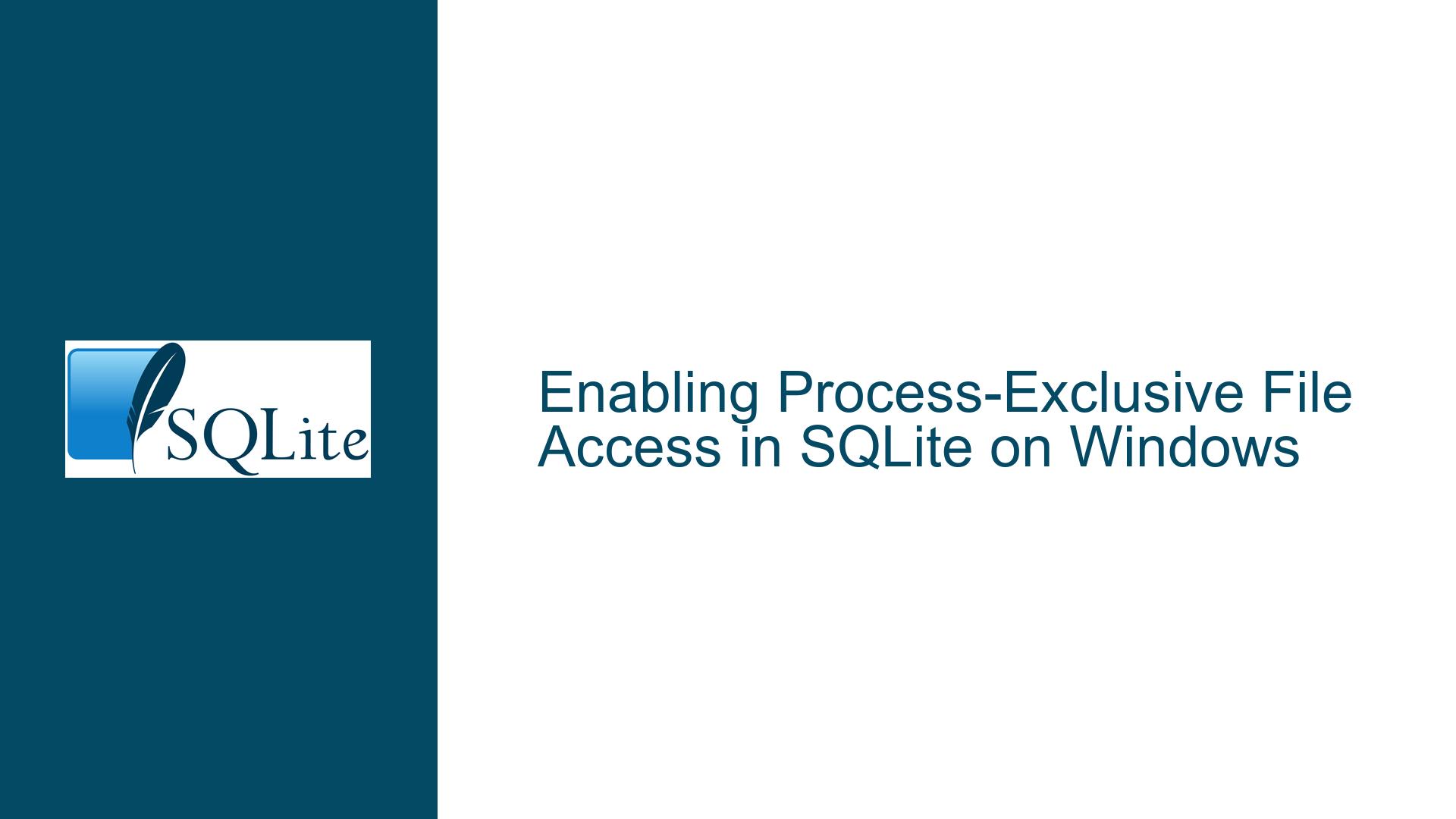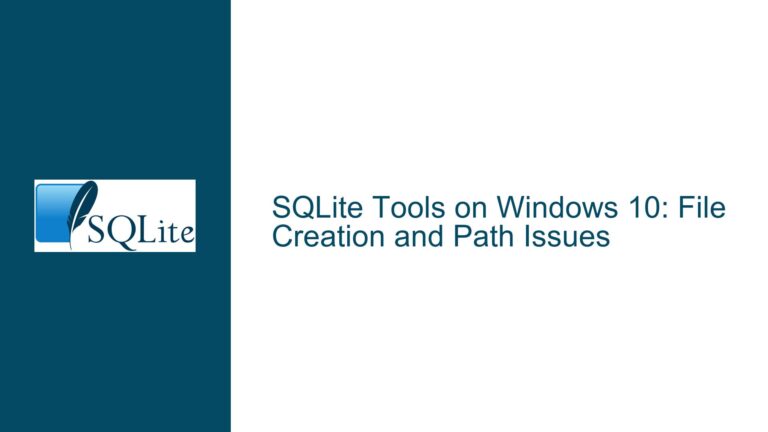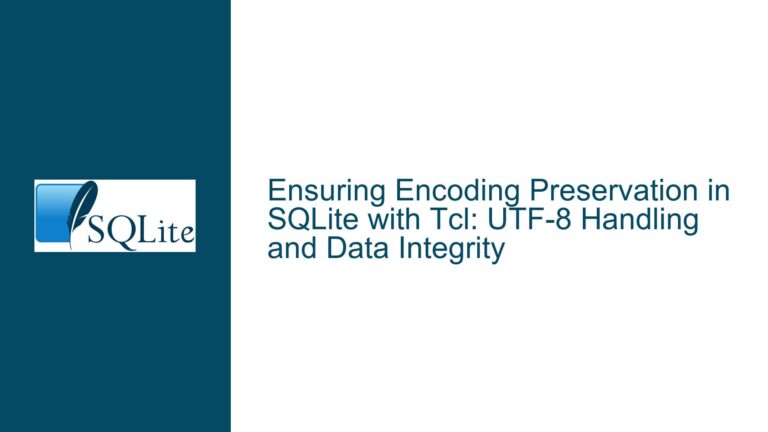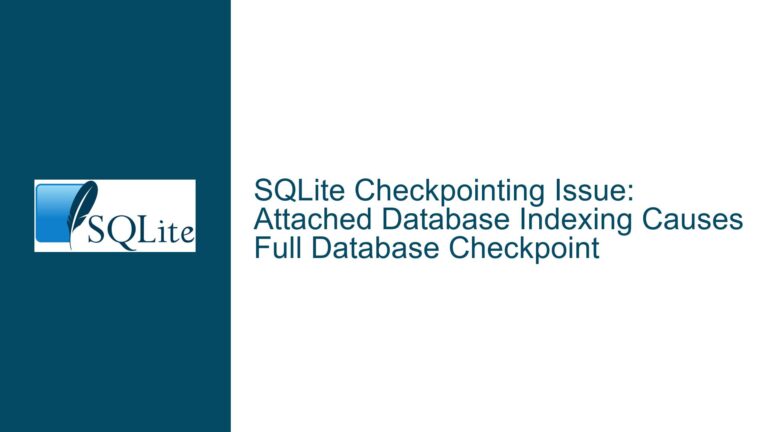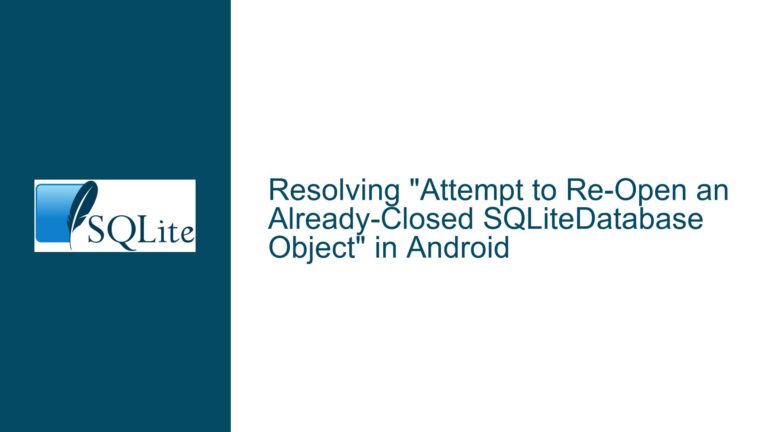Enabling Process-Exclusive File Access in SQLite on Windows
Understanding SQLite’s File Sharing Behavior on Windows
SQLite, by default, allows shared access to database files across multiple processes on Windows. This behavior is implemented through the CreateFile() Win32 API function, where the dwShareMode parameter is set to FILE_SHARE_READ | FILE_SHARE_WRITE. This configuration permits other processes to read from and write to the same database file concurrently. While this design promotes flexibility and multi-process access, it can lead to unintended consequences, particularly when users attempt to copy open database files using tools like Windows Explorer. Such actions can result in corrupted copies, especially when SQLite is operating in EXCLUSIVE WAL (Write-Ahead Logging) mode.
The core issue lies in the inability of SQLite to enforce process-exclusive file access on Windows. Process-exclusive access would require setting dwShareMode to 0, which prevents other processes from opening the file while it is in use. This limitation has prompted some users to build custom versions of SQLite to enforce exclusive access, but this approach is not scalable or maintainable for the broader community. The discussion highlights the need for an upstream solution to provide a native option for process-exclusive file access on Windows.
Challenges and Implications of Implementing Process-Exclusive Access
Implementing process-exclusive file access in SQLite on Windows presents several challenges and considerations. First, this feature would inherently be platform-specific, as the concept of process-exclusive file access is tied to the Windows API. On Unix-like systems, such as Linux and macOS, the equivalent functionality does not exist in the same form. The flock mechanism, often cited as a potential solution, is non-binding and does not enforce mandatory locking, making it unsuitable for achieving true process-exclusive access.
Another consideration is the potential impact on existing applications. Introducing a process-exclusive access option could break compatibility with applications that rely on shared file access. For example, multi-process applications that use SQLite in a distributed manner would need to be redesigned to accommodate the new access mode. Additionally, the feature would need to be carefully documented to ensure that developers understand its implications and limitations.
The discussion also touches on the use of PRAGMAs and URI parameters as potential mechanisms for enabling process-exclusive access. PRAGMAs are SQLite-specific commands that configure various aspects of the database engine, while URI parameters allow for fine-grained control over database connections. Both approaches have been used in the past to implement platform-specific features, making them viable candidates for this use case. However, any implementation would need to be thoroughly tested to ensure stability and performance across different Windows environments.
Implementing and Troubleshooting Process-Exclusive File Access in SQLite
To address the need for process-exclusive file access in SQLite on Windows, developers can take several steps. First, they should ensure that they are using a version of SQLite that supports the feature. As noted in the discussion, SQLite 3.34.0 introduced support for process-exclusive access via a URI parameter. This parameter can be used to configure the dwShareMode setting when opening a database file, effectively enabling process-exclusive access.
To enable process-exclusive access, developers can modify the database connection string to include the appropriate URI parameter. For example, the following connection string demonstrates how to enable process-exclusive access:
sqlite3_open_v2("file:database.db?exclusive=1", &db, SQLITE_OPEN_READWRITE | SQLITE_OPEN_CREATE | SQLITE_OPEN_URI, NULL);
In this example, the exclusive=1 parameter instructs SQLite to set dwShareMode to 0 when opening the database file. This ensures that no other process can access the file while it is in use.
Developers should also be aware of the potential pitfalls associated with process-exclusive access. For instance, if a process crashes or is terminated unexpectedly, the database file may remain locked, preventing other processes from accessing it. To mitigate this risk, developers should implement robust error handling and recovery mechanisms, such as using timeouts or periodic checks to release locks in case of a failure.
In addition to enabling process-exclusive access, developers should consider the broader implications for their applications. For example, they may need to redesign their application architecture to minimize the need for shared file access. This could involve using a client-server model or implementing a custom locking mechanism to coordinate access to the database file.
Finally, developers should stay informed about updates and changes to SQLite’s file access behavior. The discussion highlights the importance of documentation and community feedback in ensuring that new features are properly understood and utilized. By actively participating in the SQLite community and staying up-to-date with the latest developments, developers can ensure that their applications remain compatible and performant.
In summary, enabling process-exclusive file access in SQLite on Windows requires a deep understanding of the underlying file system APIs and careful consideration of the implications for application design. By leveraging the appropriate URI parameters and implementing robust error handling, developers can achieve the desired level of file access control while minimizing the risk of data corruption or application instability. As SQLite continues to evolve, it is essential for developers to stay engaged with the community and contribute to the ongoing development of this powerful database engine.
